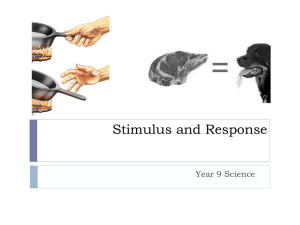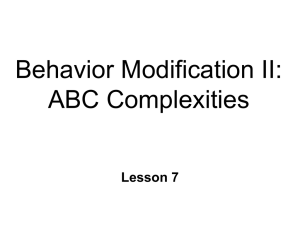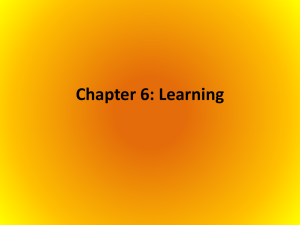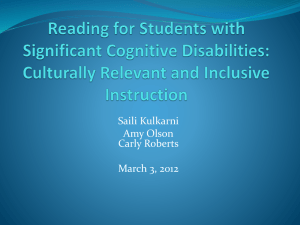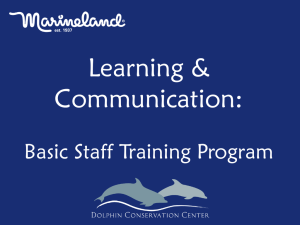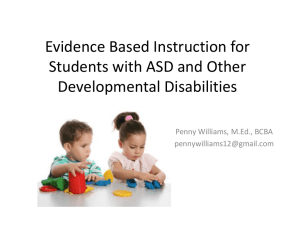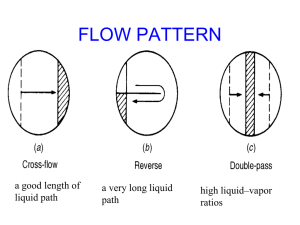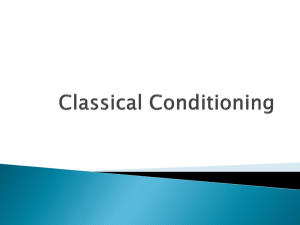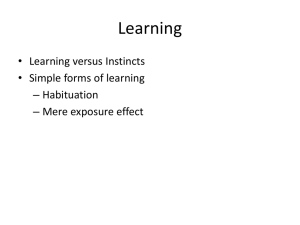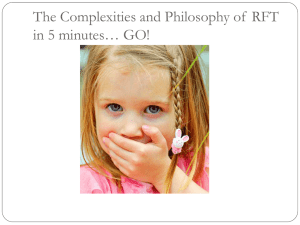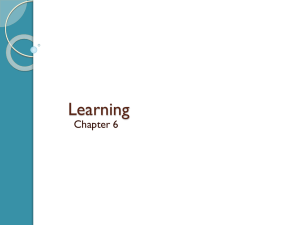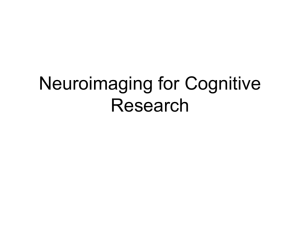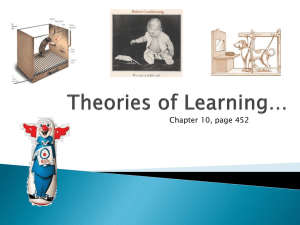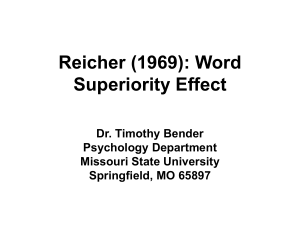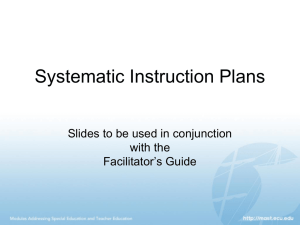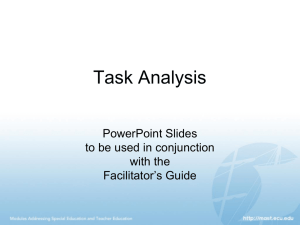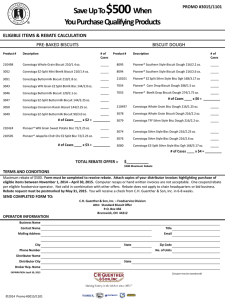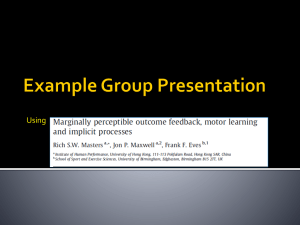Teaching Adaptive Skills to People with Autism Spectrum Disorders
advertisement
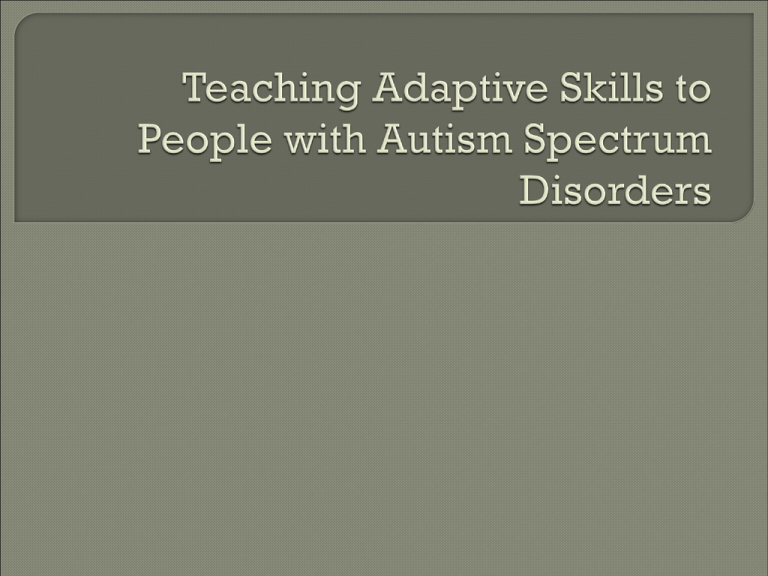
Enable greater independence therefore less reliance on staff/family for basic needs give a sense of success Should be done in real life environments Should focus on skills the person needs in their day to day life Communication Self Help Work Having fun We are all dependent on context, environmental cues, prompts and reinforcement in order for us to learn new skills Often for people with ASD, we need to make the context, prompts and reinforcement much more obvious in order that learning can take place Discuss the following points in relation to the video clip: The learning environment The skills that Chris has now Skills he could learn Provide brief feedback Don’t get into discussion about teaching methods, that comes later! Three common teaching methods Discrete Trial Training Incidental/Naturalistic Teaching Structured Teaching Observe the person attempting the task & record where they need support Have a clear & measurable goal Break the task into manageable steps Use knowledge of person & task to decide teaching method Have a system for measuring success Task Analysis Chaining Prompting Reinforcement Breaking down a task into manageable steps Rule of thumb: The more disabled the person is, the smaller the steps should be Steps should be described in clear and unambiguous language Refers to the order in which the steps are taught Forward Chaining=Start to Finish Backward Chaining=Finish to Start Global Chaining=Start at easiest step INDIRECT VERBAL DIRECT VERBAL GESTURAL/VISUAL MODELING PARTIAL PHYSICAL ASSIST FULL PHYSICAL ASSIST What motivates the person to learn the skill? • Naturally occurring consequence • Adding an extra Task is broken into steps (task analysis) The same prompt is used for each attempt Reinforcement is given on completion of task If task is not completed=failed trial, try again later Frequent repetition, referred to as drills the discriminative stimulus (SD)-- the instruction or environmental cue to which the teacher would like the individual to respond the prompting stimulus (SP)-- a prompt or cue from the teacher to help the individual respond correctly (optional) the response (R)-- the skill or behavior that is the target of the instruction, or a portion thereof the reinforcing stimulus (SR)-- a reward designed to motivate the individual to respond and respond correctly the inter-trial interval (ITI)-- a brief pause between consecutive trials Not a preferred method for most adults, but useful for adults with ASD and intellectual disability for: • Teaching a work related skill that involves lots of repetition e.g. sorting recycling, assembly line work • “Academic” tasks such as learning to use PECS or sign language the discriminative stimulus (SD)-- teacher says “time for a biscuit Brian” and puts the biscuit jar on the table the prompting stimulus (SP)– Teacher says “Biscuit, Brian” accompanied by the pointing to the biscuit card. the response (R)– Brian touches the biscuit card. the reinforcing stimulus (SR)– Teacher says, “Well done Brian, and offers him a biscuit from the jar. Repeat 3 times In your group 1. Identify a simple skill that would suit the DTT approach 2. Put together a teaching plan that has the • discriminative stimulus (initial prompt) • prompting stimulus (specific prompt) • response (the behaviour/skill) • reinforcer Uses “in the moment” opportunities that occur in daily life Uses prompts that are known to be successful for that person. Not just random, opportunities for learning are planned Also known as Graduated Assistance Can be used in “Most to Least” or “Least to Most” formats More “natural” in appearance INDIRECT VERBAL (IV): What do you need to do next Rob? DIRECT VERBAL (DV): Rob, put the paper on the tray, writing side upwards GESTURE: Point to the tray on the photocopier MODELING: Put the paper in the tray yourself so that Rob can observe PARTIAL PHYSICAL ASSIST (PPA): Pass Rob the paper to be copied and guide him by the elbow to place the paper in the tray FULL PHYSICAL ASSIST (FPA): Hand-over-hand assistance to put the paper in the tray Discuss how you would go about finding which type of prompts were most effective for a person with ASD and severe intellectual disability. Identify the natural reinforcers for people and take advantage of those opportunities where a natural reinforcer is occurs Uses the teaching methods of task analysis, prompting, chaining, reinforcement A key aspect of the TEACCH approach Doesn’t have a strong evidence base as an overall concept, but the component parts do Either, 1. Mangers, identify how you can support your staff to assist people with ASD to increase their daily living/work skills 2. Support staff/Therapists: Identify a person you work with, find out what type of prompts they respond best to and teach this to your colleagues

